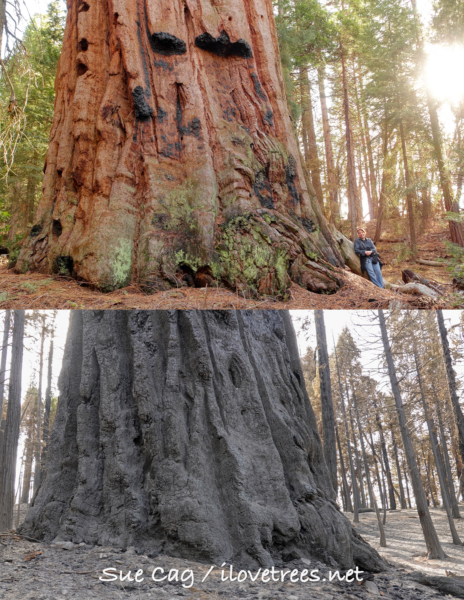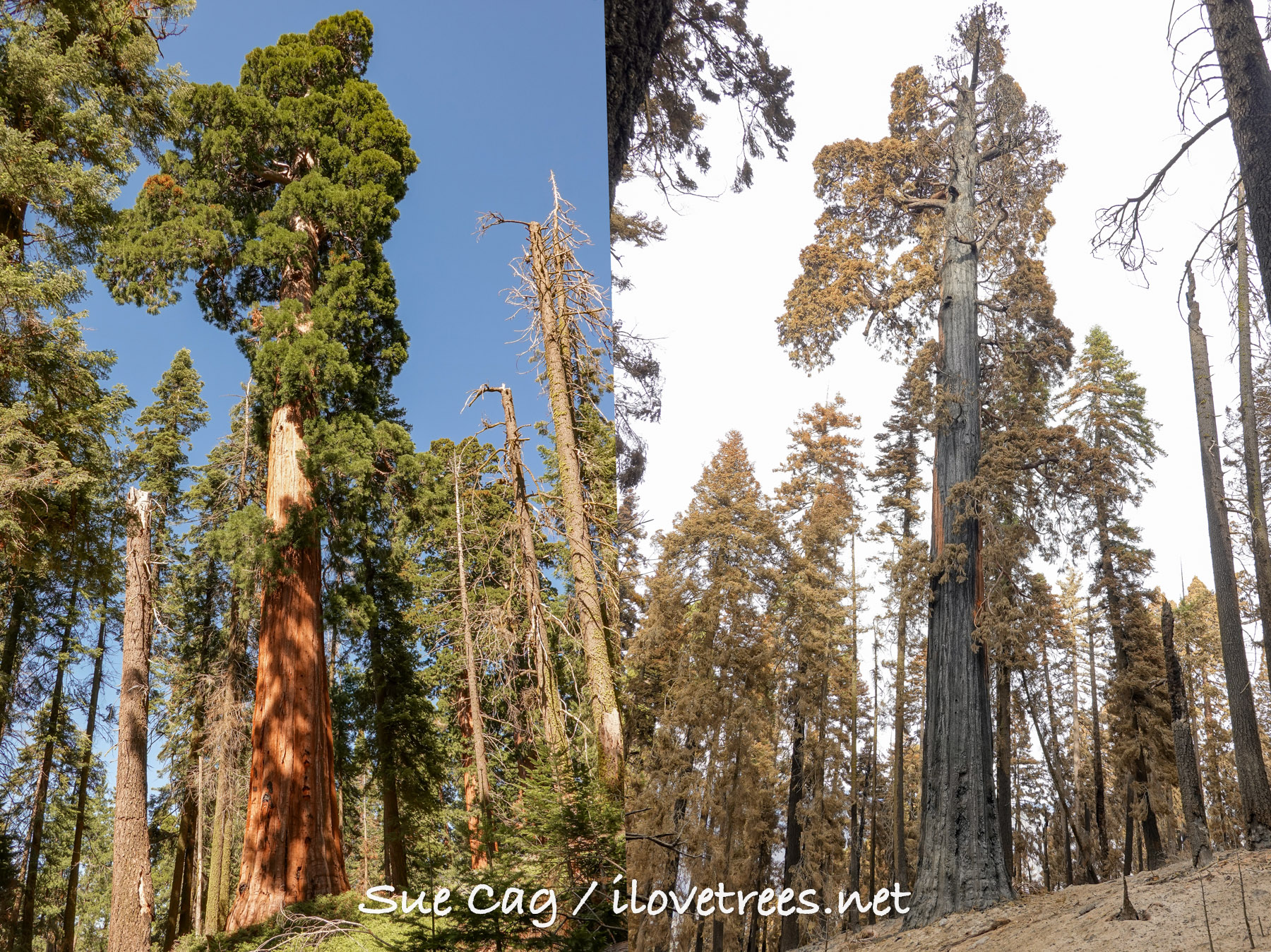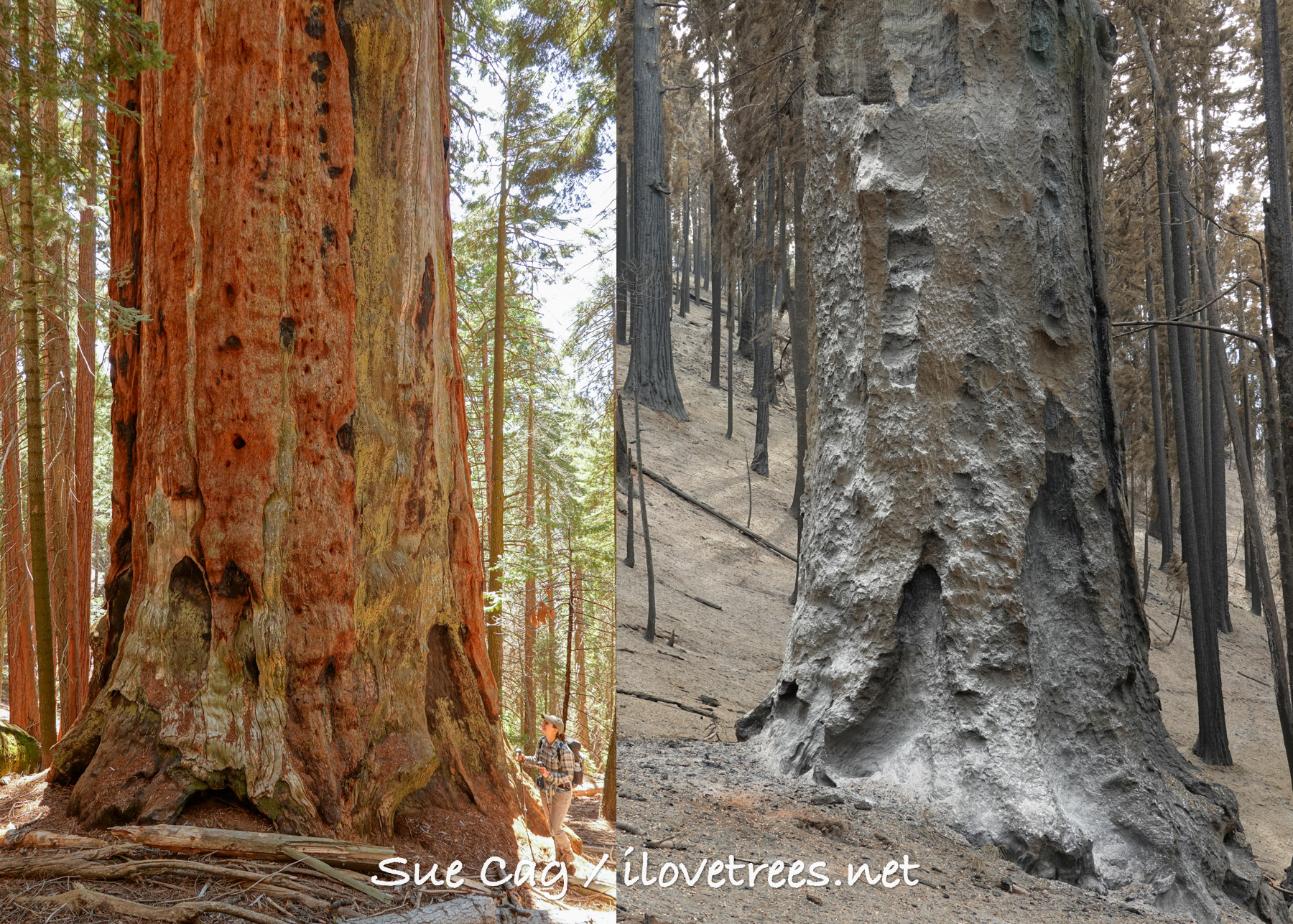DISCLAIMER: This forest is closed. The upper trail is entirely gone. There is active burning, knee-deep ash, and hidden holes to fall into where trees used to be. Please do not attempt to reach this hazardous area.
Update: this forest is still on fire as of 12-3-20.
Update: this forest is still on fire as of 7-11-21.
I had heard that the Patriarch Tree perished in the SQF Complex / Castle Fire and needed to see it for myself. The beginning of the Bear Creek Trail is covered in pink fire retardant and marred by patchy burns. Heading farther up, major sequoia losses can be seen in the Carr-Wilson section of the grove below. An adjacent slope is scorched to complete colorlessness, while a small area of living young sequoias stands like a tiny “green island” farther up the drainage. The entire ridge line leading to Patriarch is scorched to skeleton trees and ash. Smoke rises from areas still smoldering. Small flames issue from broken-off snags.
I knew Patriarch was lost, but knowing doesn’t lessen the sting of ascending the ridge and seeing the dead giant for the first time. The trunk is entirely blackened from bottom to top. Two of the biggest branches still stick out of the peak, but without any of their thick verdant foliage. Every needle still clinging on bears a colorless beige. Try as I might, I can spot no green. I walk around to find the bole hollowed out above the original fire scar. I look up to see smoke still rising from a hole far up at the top. Ash gently cascades down through the carved out trunk. The big tree continues to burn two months “after” the fire.
I continue up past Patriarch and its lost friend, still standing almost within limb’s reach. The forest is severely burned everywhere I look. There are numerous giant sequoia losses. I am familiar with these trees. I remember the way they looked before and it’s beyond devastating seeing one after another burned to death like this.
Farther up, I spot a few living sequoias on the periphery. Then I get to Flint’s pink forest. Miraculously, the modest-sized sequoias in this area still live. Only light or moderate fire marks the bottoms of the trees. A few nearby sequoias were lost in a patchy manner, including one I spent time at during my previous visit.
I compared some of my photos from a few months ago to those I took post-fire. The differences are startling. I realize that the loss feels greater for someone like me, someone who knew these trees. I remember what the trees looked like before. I’ve touched the bark on each of their trunks. I’ve stared up into their grand canopies. I’ve marveled at each unique characteristic. And now they are gone.
Below are before and after collages along with a complete gallery of the upper section of McIntyre as it stands today.
RELATED: The Nelson Trail After Fire – McIntyre Grove
![]() About the Author:
About the Author:
Sue Cag is a musician, artist, writer, photographer, and nature preservationist.
All photos and video by Sue Cag. All Rights Reserved. Photos and video may not be used without permission.
PHOTO GALLERY








